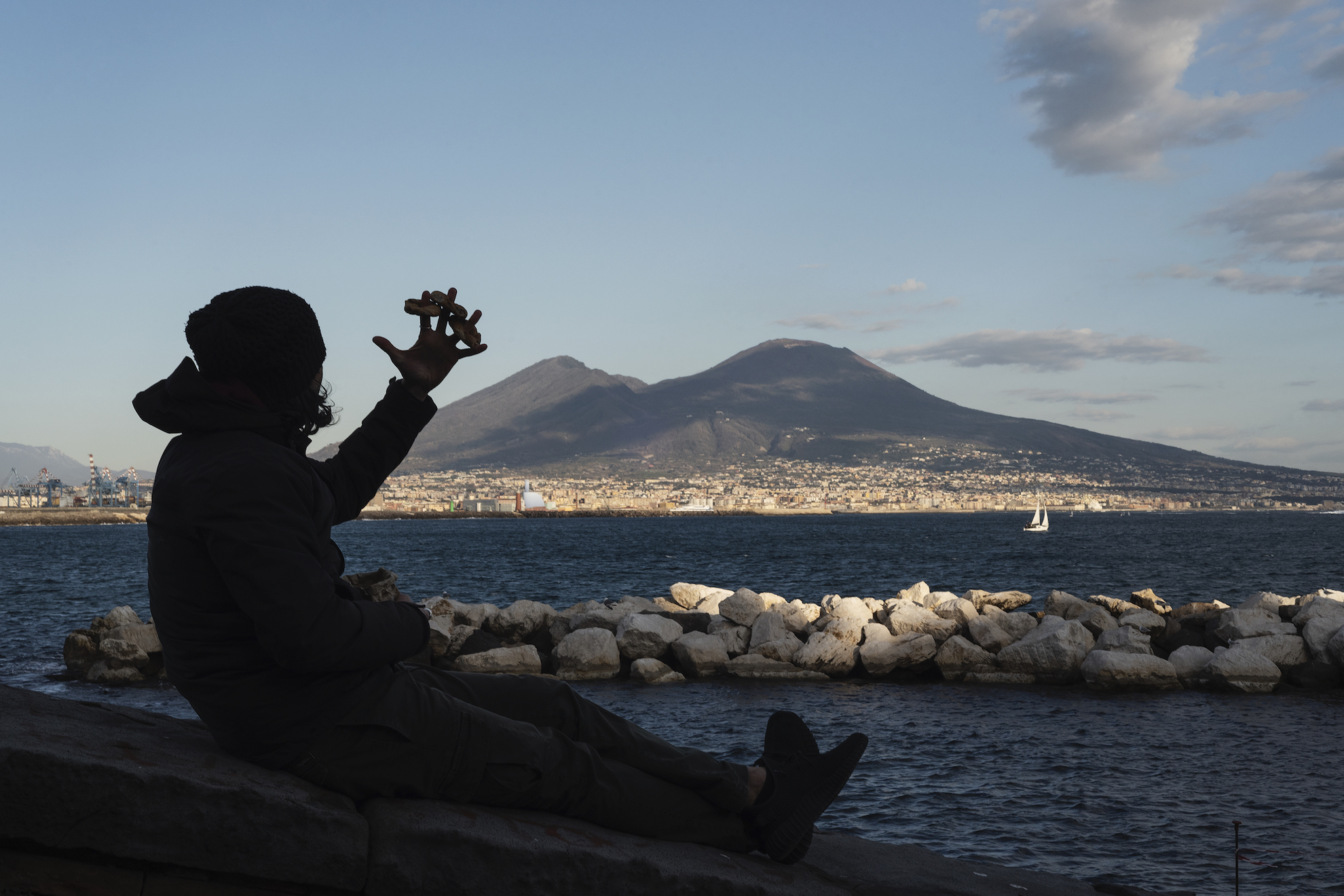From food for the poor to a gourmet snack. It is clear that Neapolitan tarallo, or tarallo 'nzogna e pepe (lard and pepper), is the most democratic delicacy ever baked in the city of Naples.
A snack for all budgets to munch while walking through the historic center, while having a trendy aperitif or on the rocks of Mergellina. Tarallo is a pop element of the Neapolitan street food. Chewing this tobacco-colored pretzel brings you to the colors of Andy Warhol's crackling “Vesuvius” or to the pyrotechnic emotions of the Gulf of Naples on New Year's Eve. A lively taste that translates itself into images.
Ph. Anna Monaco

The crunch is softer than a bite of a biscuit. The tarallo, in fact, is more fragrant thanks to the lard which immediately gives it a full and rich flavor. Pepper gives it a spicy and exotic touch that titillates the palate. A pungent aroma that is gently mitigated by the sweetness of almonds. You can taste it with closed eyes and it will take you to Naples for a few seconds, wherever you are. Of course, pork fat makes it an enemy of vegan cuisine. Be patient... the Tarallo has a soul that certainly cannot be “mortified” by peanut oil!
Ph. Anna Monaco

This large ring-shaped biscuit is now used as a finger food in buffets. Lately some restaurants crumble it on great classics such as spaghetti with clams, while wine cellars couple it in baskets together with bread, to combine it with meats and cheeses. In any case, the Neapolitans prefer it as a treat to silence the stomach’s growling, just like what happened to their less fortunate ancestors.
“...they are especially useful for cleaning the mouth of the disgusting taste of the sulphurous water of Saint Lucia, in whose virtue the people have a lot of faith. For five cents, at the source you can have a glass of water and four taralli and you can be served, moreover, by a woman who is neither tiny nor clean”.Carlo Collodi – “Il viaggio per l’Italia di Giannettino”
The tarallo is in fact the child of famine. In the book “Belly of Naples”, the writer Matilde Serao described the famous “warehouses”, the popular areas adjacent to the port, where undernourished people lived. The belly of Naples swarmed of people, but the belly of those people was frighteningly empty. At the end of the 1700s the first taralli were prepared, a dish with a low cost, but very caloric. The bakers became the darlings of the people, because they understood that the bread dough was like the pig: nothing had to be thrown away. Then, with the “sfriddo” (remains of bread dough) they created two strips twisted together joined at the ends like a bracelet and flavored with lard, pepper and almonds. Once out of the oven they looked like appetizing jewels to be consumed in six bites and with few coins.
Ph. Anna Monaco

A mythological character was born: the tarallaro. He was a street vendor carrying a basket full of hot taralli covered with a cloth on his shoulders. He sold them on the street shouting “taralle, taralle cavere!” (“taralli, hot taralli!”). Today the traditional “taralli lard and pepper” can be bought in the bakeries of the historic center and in the kiosks on the seafront.
Its crumbly consistency goes well with bubbles. Or with a refreshing wine such as Gragnano, or above all with an ice cold beer, which softens the fat of the tarallo without covering its fragrance. The ancient tradition would like it immersed in sea water. Tastes and customs change, but the veracity of tarallo is always à la page.

